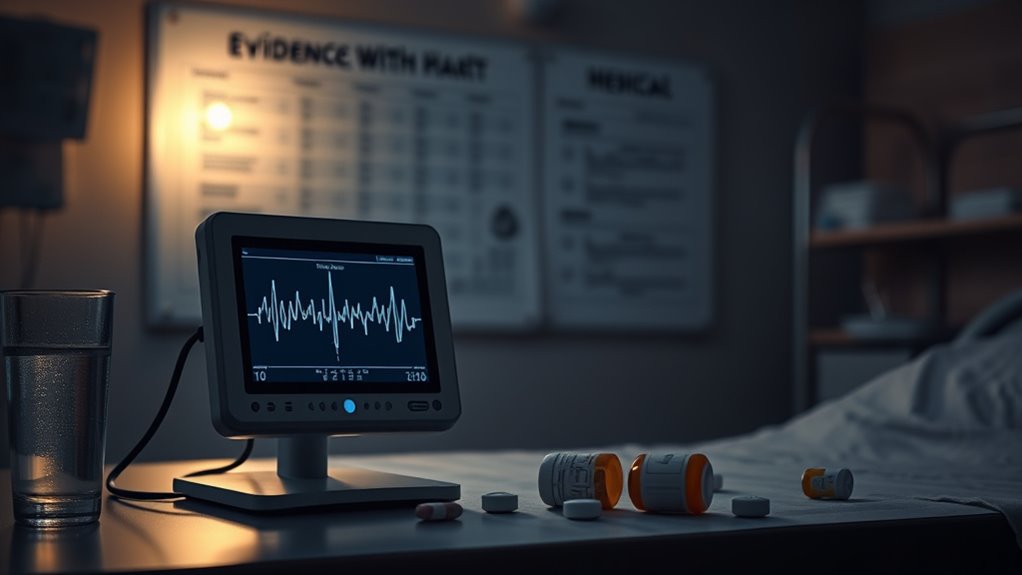When you reboot, it’s normal to experience a temporary flatline or brief unresponsiveness as your system resets, which usually clears temporary issues. You might also notice cravings or urges to revert to old habits, as your brain reacts to change. These side effects are common and manageable through distraction and support. If you want to understand what’s really happening during this process and how to handle it effectively, there’s more to explore below.
Key Takeaways
- Rebooting often causes temporary system “flatline,” unresponsiveness, or brief freezing, which are normal and resolve quickly.
- Cravings and behavioral urges may increase during resets, driven by habit changes and brain’s response to new routines.
- Evidence suggests rebooting improves software performance but doesn’t address underlying hardware or deep-rooted issues.
- In health or mental resets, rebooting can aid progress, but immediate results are unlikely; patience and support are essential.
- Managing side effects involves understanding vibrational and behavioral factors, using distraction, and aligning mindset with positive intentions.

Rebooting your device can often resolve technical issues quickly, but it’s important to be aware of potential side effects. When you restart a device or system, it’s fundamentally a reset, which can temporarily disrupt processes and cause unintended consequences. For many, rebooting is a straightforward way to fix glitches, but it’s not without its downsides. Knowing what to expect can help you prepare for any short-term discomfort or unexpected reactions.
One common side effect you might notice is a “flatline” in performance or activity. In the context of digital devices, this can mean a momentary pause where apps or functions seem unresponsive. If you’re rebooting a smartphone or computer, the system might appear frozen for a few seconds or minutes before coming back online. This isn’t usually a sign of a serious problem, but it can be frustrating if you’re in a hurry. The temporary halt is often due to the device clearing out temporary files or resetting processes, which takes a moment. While this flatline can seem alarming, it’s typically a normal part of the reboot process.
A brief pause or freeze during rebooting is normal and usually temporary.
Another potential side effect revolves around cravings, especially when rebooting as part of a health or lifestyle change. For example, if you’re trying to reset addictive behaviors or habits, rebooting your routine might trigger cravings or urges to revert to old patterns. This is because your brain is used to certain cues and habits, and a sudden change can unsettle your mental equilibrium. During this period, you might feel an increased desire for familiar comforts, like junk food, cigarettes, or other habits you’re trying to break. It’s important to anticipate these cravings and develop strategies to manage them, such as distraction techniques or support networks.
Furthermore, understanding the underlying vibrational state involved in habits and routines can help you better navigate these side effects. When rebooting as part of a process like health improvement or mental reset, aligning your mindset with positive intentions can reduce the intensity of cravings and resistance. When considering rebooting in an evidence-based context, it’s crucial to differentiate between myth and fact. Scientific research supports the idea that rebooting can clear temporary glitches and improve performance, but it’s not a cure-all. For instance, rebooting your computer can resolve many software issues, but it won’t fix underlying hardware problems. Similarly, in health contexts, resetting routines or habits can be beneficial if done thoughtfully, but expecting immediate or complete results is unrealistic. The key is understanding that rebooting is often a tool to facilitate change, not a magic solution.
Frequently Asked Questions
How Long Do Reboot Side Effects Typically Last?
The side effects of a reboot typically last between one to four weeks. During this time, you might experience a flatline, increased cravings, or mood swings. Everyone’s different, so some people notice these symptoms sooner or later. To ease the process, stay busy, practice self-care, and remind yourself that these effects are temporary. If symptoms persist beyond a month, consider consulting a healthcare professional for guidance.
Are There Any Long-Term Health Risks From Rebooting?
There are generally no long-term health risks from rebooting, especially when done responsibly and under guidance. Most side effects like flatline or cravings are temporary and improve over time. However, if you experience persistent issues or mental health concerns, it’s important to consult a healthcare professional. Staying informed and listening to your body helps ensure rebooting remains a safe, beneficial process without long-term harm.
Can Rebooting Cause Mental Health Issues?
Rebooting can sometimes cause mental health challenges like mood swings or increased anxiety, especially if you’re already prone to these issues. However, it’s not guaranteed and varies from person to person. If you notice negative effects, it’s wise to consult a healthcare professional. Remember, staying mindful and seeking support can help you navigate these changes, making your reboot experience safer and more beneficial for your mental well-being.
Is Rebooting Safe for People With Pre-Existing Conditions?
Rebooting can be risky if you have pre-existing conditions. It’s essential to consult your healthcare provider before starting, as the process may trigger or worsen symptoms. You might experience intense cravings or emotional shifts, which could be challenging. Always prioritize your safety, and don’t hesitate to seek medical advice to determine if rebooting is suitable for you. Your health and well-being should come first.
What Are the Signs That a Reboot Is Going Wrong?
If your reboot is going wrong, you’ll notice persistent or worsening symptoms like intense cravings, mood swings, or feelings of flatlining that don’t improve. You might experience physical symptoms such as fatigue, dizziness, or headaches. If your mental or physical health deteriorates or if you feel overwhelmed, it’s a clear sign to pause and seek professional guidance. Trust your body and don’t ignore persistent or severe symptoms.
Conclusion
Think of rebooting as tending to a garden after a storm. The flatline is the soil settling, cravings are weeds trying to resurface, but with patience, new growth will thrive. Your journey isn’t about avoiding storms but learning to nurture through them. Trust the process, knowing that each challenge is a symbol of renewal. In time, your inner landscape will bloom with resilience, stronger and more vibrant than before.









